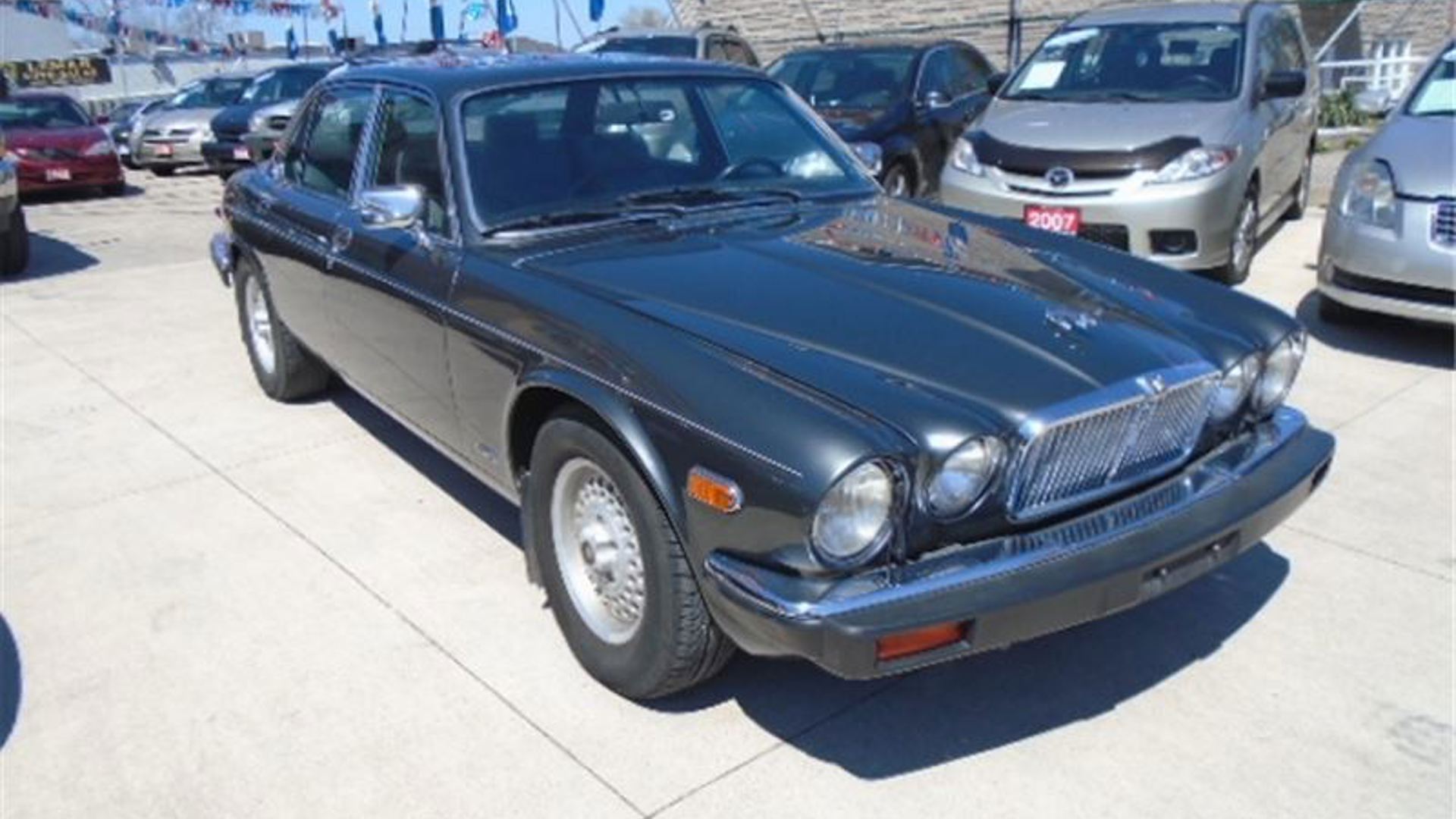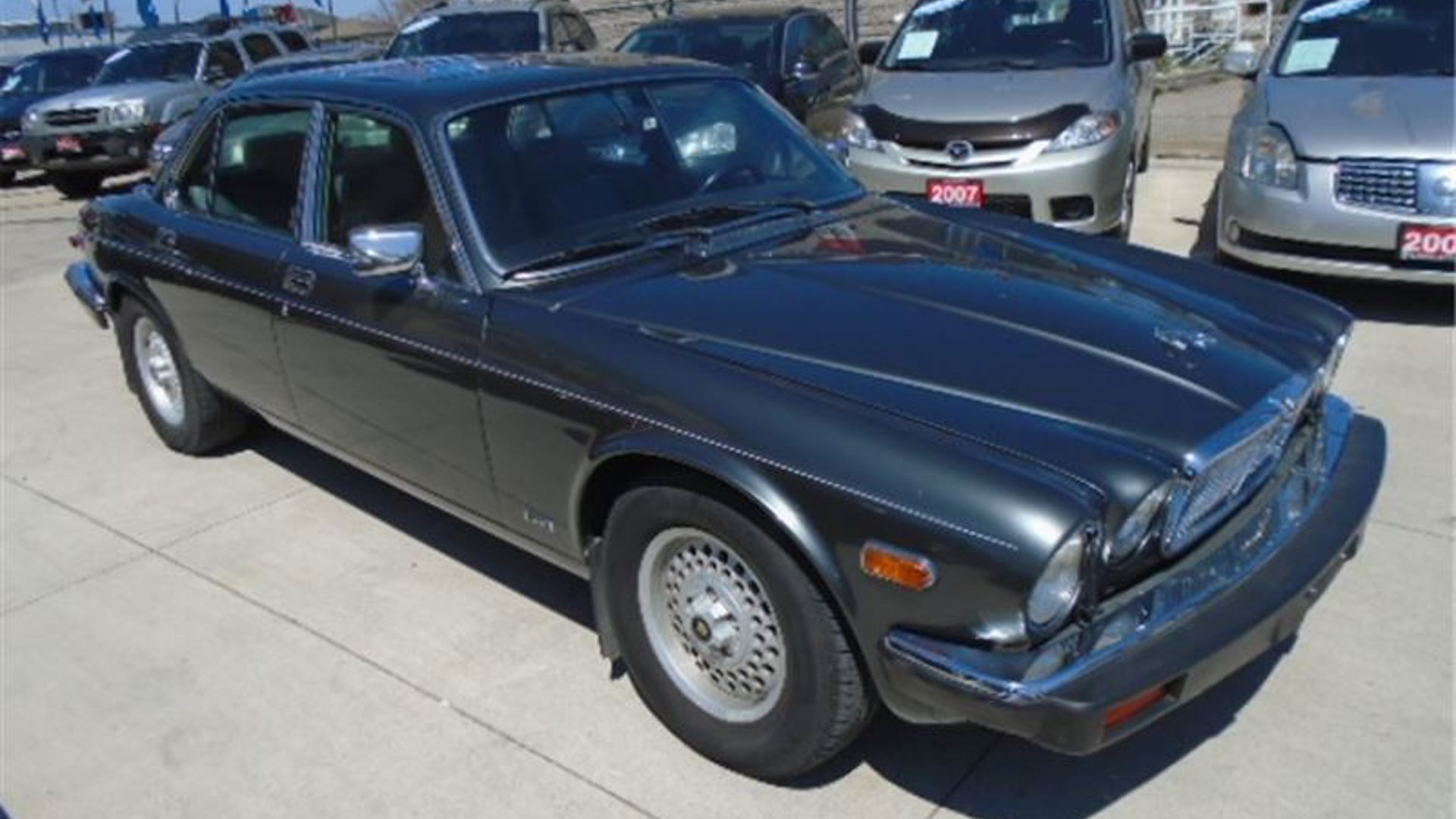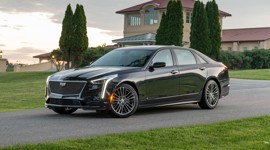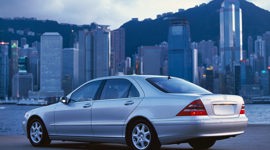Twelve cylinders, lots of leather, thick carpeting, and classic British styling that can be yours for less than $1,000 per cylinder? That's what we've got for you in this week's autoTRADER.ca Find of the Week. It's a 1990 Jaguar XJ, powered by a 5.3L V12, for sale in Stoney Creek, part of Hamilton, ON.
Jaguar's XJ sedan was first launched in 1968. The sleek design was the final sedan to be penned by Jaguar founder Sir William Lyons, and it would continue, with some slight changes, all the way until 1992. The Series I cars were the shortest lived, lasting from 1968 until 1972. When it was relaunched as the Series II, the only real changes were a styling revision outside to meet newer safety regulations, along with a more modern (at the time) dashboard.

In 1979, the Series III was introduced. It might look just like the older cars, at least at first glance, but the styling was actually completely changed. The Pininfarina redesign had more interior space, especially for rear-seat passengers. The door handles and bumpers looked much more modern and much less "well, we need to put something on here to meet these new impact standards." The styling was so successful that XJs basically looked just like it all the way until 2009.
The Series III still rode on the same chassis as the original 1968 car and was supposed to only be a stop-gap solution while the all-new model codenamed XJ40 was being developed. That new car launched in 1986, but the Series III didn't stop production. Jaguar didn't want to put a Rover V8 into the newest XJ40 model, so they deliberately designed an engine bay that would fit their own straight-six, but not a vee-configuration. That meant that they had to keep building the old car for buyers who wanted the 12-cylinder engine.

The V12 cars were sold in a number of countries, including Canada, but the US was not on the list. That makes a later V12 Series III a very rare car in Canada. It was special enough here that the last 100 of the line, built in 1992, were actually all sold by Canadian dealers. Jaguar Canada added a brass plaque to those cars, giving their number in the series.
The V12-powered Jaguar XJ we've found this week is a late Series III car. The V12 was available as the entry-level – if you can call a V12 luxury sedan that – Sovereign trim or as the top-spec Vanden Plas. The V12 we're looking at is the higher spec model of the two.

Vanden Plas was originally a coachbuilder, founded in Belgium in 1870. The firm started building bodies in England in 1912, before becoming part of Jaguar in 1974. The name was used on the top-trim Jags for some time. For the XJ, the name means a more luxurious interior and a few badges outside.
The car was fitted with Scandinavian leather hides, prepared by Connolly of London. The seats are hand-stitched and checked to ensure that the colours match completely. The interior uses veneers made with real walnut. A Jaguar brochure claims that "one man is responsible for selection and mirror-matching" the trims, meaning the pieces on the left and right sides of the car are mirror images.
There is also a digital trip computer. The feature was less high-tech by the 1990 model year, but when it was introduced in the early 1980s, it was a surprisingly advanced addition.

But as beautiful as the Series III Jag XJ is, what it lured you in with was the V12. Jaguar's 5.3L V12. The engine was originally designed in 1954, with the idea of putting it in a 24 Hours of Le Mans racer. That effort didn't get come to fruition, but the engine was revised to see use in Jaguar road cars from 1971. It saw a number of changes over the years, including new cylinder heads and the addition of fuel injection.
Installed in the later XJ models, the engine made 295 hp and 319 lb-ft. That's an absolutely massive number for 1990, when even a Ferrari 348 was making just 300 hp. It's still impressive performance today, able to send this 2,000 kg-plus car from 0 to 100 km/h in under nine seconds. That acceleration is hampered somewhat by the three-speed automatic, but it's still a quick and quiet highway cruiser.

It even comes with two gas tanks, holding a total of 89 L. Unfortunately, V12s are thirsty, especially with just three speeds in the gearbox, and that tank is rated to give just a 560 km range. But, having something special always comes with a price.
Maybe you're looking for a striking luxury sedan, you want to experience one of the smoothest engine layouts or you just feel a need to make sure you have four times the cylinder count – for thousands of dollars less – than your neighbour's three-cylinder Ford Fiesta. Whatever your reasons, this 1990 Jaguar XJ12 is one of the cheapest ways around to get into a V12-powered car.


























